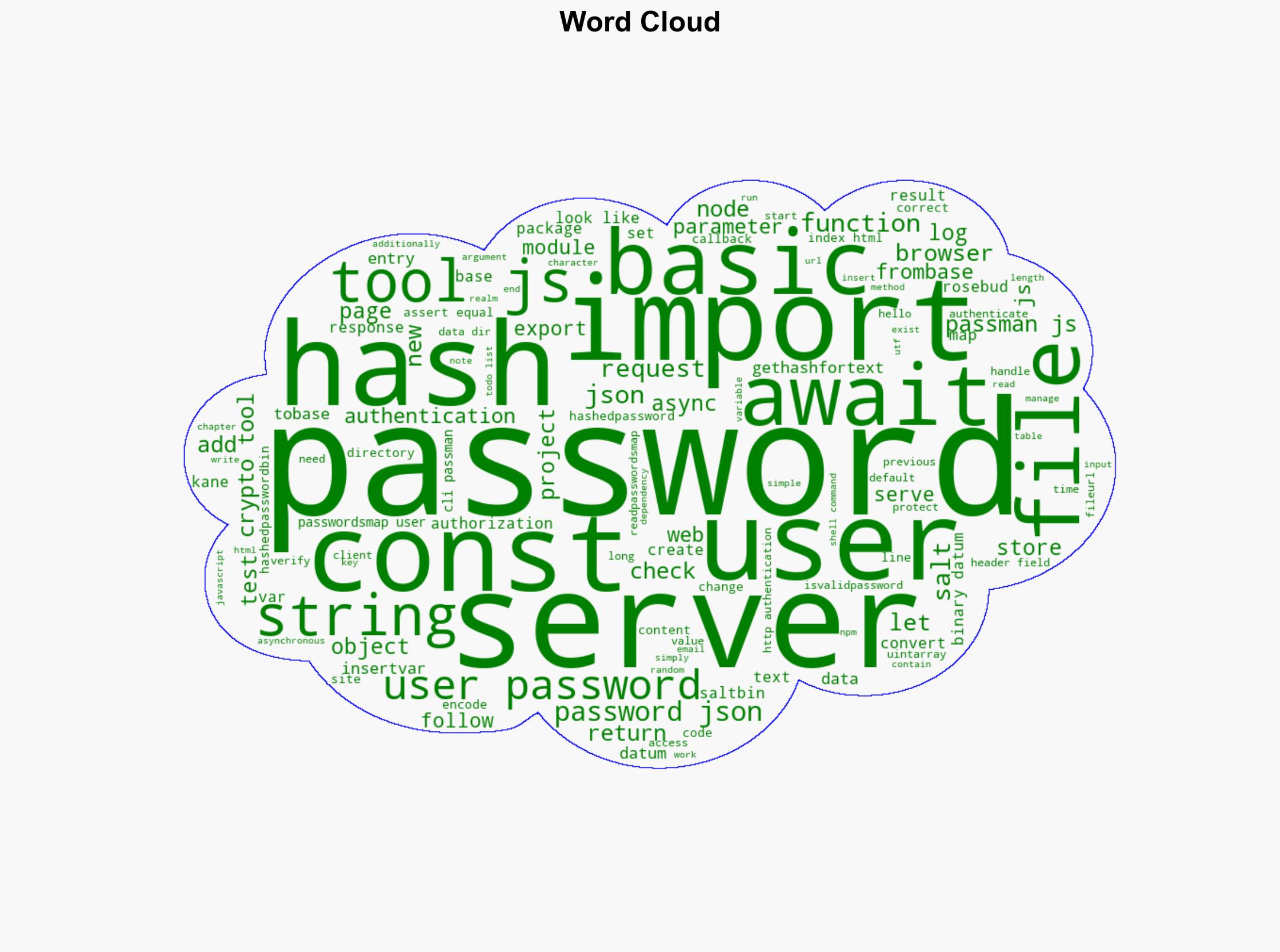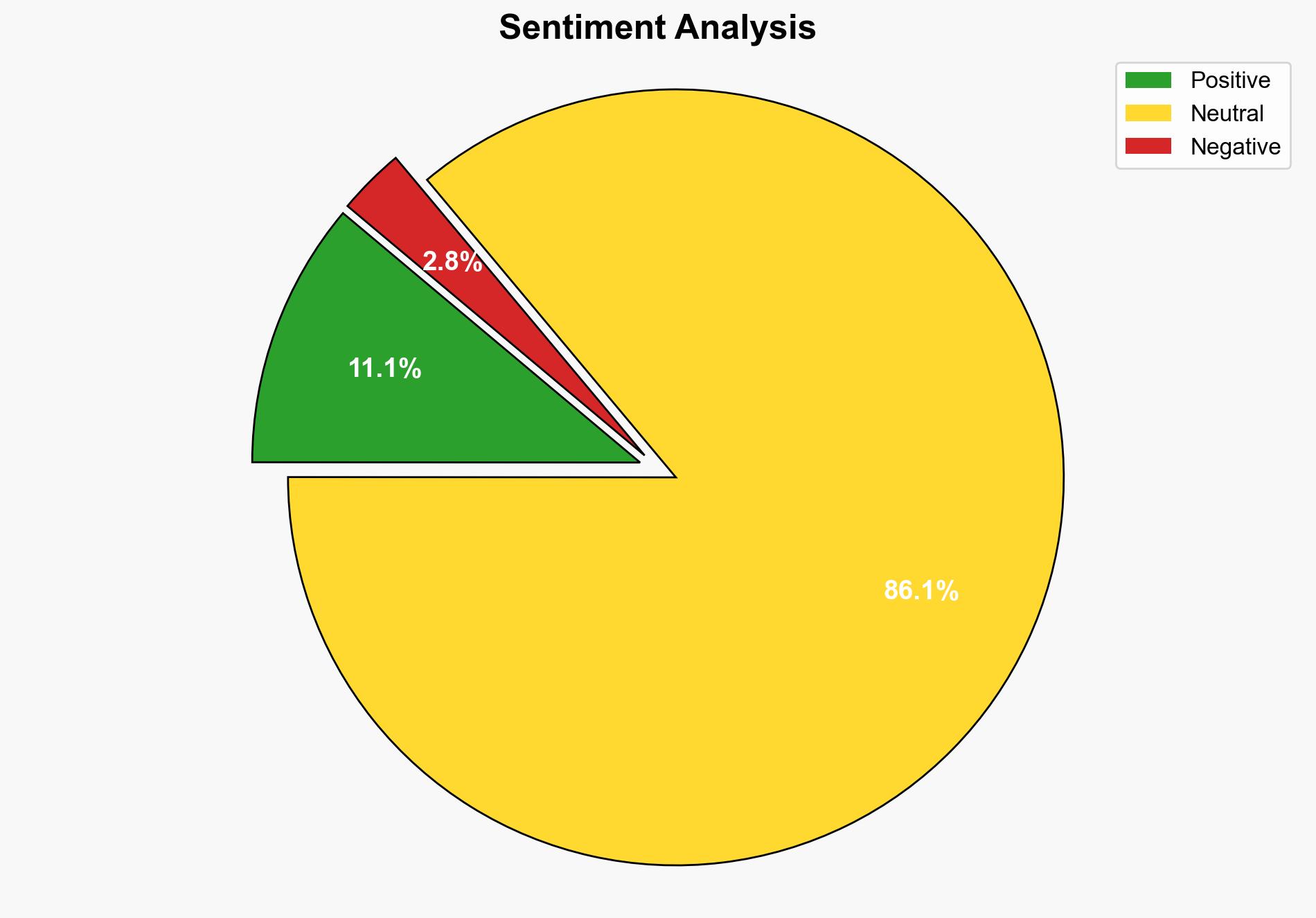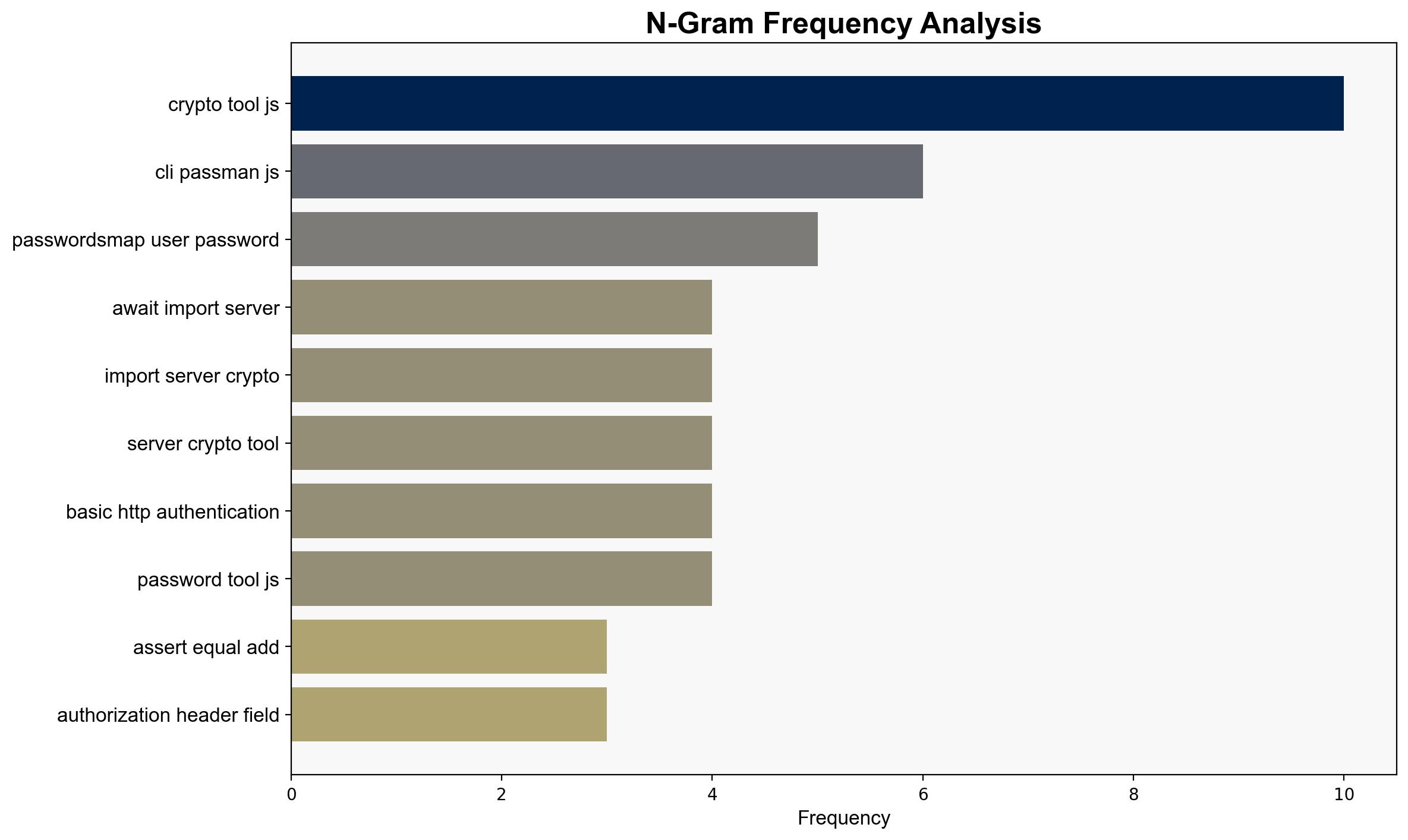Learning web development Authenticating users with plain Nodejs – 2ality.com
Published on: 2025-09-15
Intelligence Report: Learning web development Authenticating users with plain Nodejs – 2ality.com
1. BLUF (Bottom Line Up Front)
The analysis suggests that the blog post aims to educate readers on implementing basic authentication in web applications using Node.js. The most supported hypothesis is that the post is a straightforward educational resource with no deceptive intent. Confidence level: High. Recommended action: Encourage further exploration of secure authentication methods beyond basic HTTP authentication to enhance cybersecurity.
2. Competing Hypotheses
1. **Educational Intent Hypothesis**: The blog post is designed to teach readers about basic web development and authentication techniques using Node.js, with no ulterior motives.
2. **Deceptive Intent Hypothesis**: The post may be misleading or incomplete, potentially exposing readers to insecure practices by not emphasizing the limitations of basic HTTP authentication.
Using ACH 2.0, the Educational Intent Hypothesis is better supported due to the detailed instructional content and lack of indicators suggesting malicious intent.
3. Key Assumptions and Red Flags
– **Assumptions**: The post assumes readers have a basic understanding of JavaScript and Node.js. It also assumes that readers will recognize the limitations of basic HTTP authentication.
– **Red Flags**: The post does not explicitly warn about the security vulnerabilities associated with basic HTTP authentication, which could mislead less experienced developers.
– **Blind Spots**: There is no discussion of more secure authentication methods, such as OAuth or JWT, which could provide a more comprehensive understanding of web security.
4. Implications and Strategic Risks
– **Cybersecurity Risks**: If readers implement basic HTTP authentication without understanding its vulnerabilities, this could lead to insecure web applications.
– **Educational Impact**: The post could either positively contribute to the skillset of budding developers or inadvertently promote insecure coding practices if not critically assessed by the readers.
– **Broader Implications**: Inadequate emphasis on security could lead to a proliferation of vulnerable applications, increasing the attack surface for cyber threats.
5. Recommendations and Outlook
- Encourage the inclusion of warnings about the limitations of basic HTTP authentication in educational materials.
- Promote resources that cover advanced authentication methods to provide a more comprehensive education.
- Scenario-based Projections:
- Best Case: Readers use the post as a stepping stone to learn more secure authentication methods.
- Worst Case: Readers implement insecure practices, leading to widespread vulnerabilities.
- Most Likely: The post serves as an introductory resource, with readers seeking additional information on secure practices.
6. Key Individuals and Entities
No specific individuals are mentioned in the source text snippet. The entity involved is the blog platform 2ality.com.
7. Thematic Tags
cybersecurity, web development, educational resources, Node.js, authentication methods




